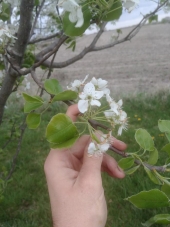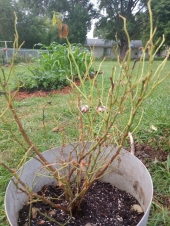








My online educational sites:
https://www.pinterest.ca/joelbc/homestead-methods-tools-equipment/
https://www.pinterest.ca/joelbc/mixed-shops/




http://www.popcliq.com (web development), GoPermaculture Food Forest http://www.permies.com/t/57687/forest-garden/Permaculture-Food-Forest-suburban-permaculture, Sea Buckthorn (Seaberry) grower (hobbiest) https://www.facebook.com/michelle.bisson.37, zone 3b/4b (borderline) Quebec Canada














Michelle Bisson wrote:Having acidic soils is a must. They naturally grow at the edge of a coniferous forest after a forest fire or clear cutting. They like sunny areas, but can tolerate partial shade as long as they still get adequate sun.
If your soil is not very acidic, then you will need to bring in some acidic soil as the blueberries will not thrive. Some people think that throwing some pine needles on the ground around the plant will not make your soil acidic. It not possible to make your non acidic soil acidic with additives. You need to have acidic soil in the first place
My online educational sites:
https://www.pinterest.ca/joelbc/homestead-methods-tools-equipment/
https://www.pinterest.ca/joelbc/mixed-shops/




Mediterranean climate, hugel trenches, fabulous clay soil high in nutrients, self-watering containers with hugel layers, keyhole composting with low hugel raised beds, thick Back to Eden Wood chips mulch (distinguished from Bark chips), using as many native plants as possible....all drought tolerant.
 2
2




Cristo Balete wrote:... highbush varieties because they can withstand cold winters. Lowbush varieties are for warmer climates...
 1
1




Cristo Balete wrote:
Since blueberry bushes have very shallow roots, they respond well to mulch of several kinds. I have mine in clay, but I've added shovels full of granite sand, and I add the sand on top and it disappears in about a month. I put about 3-6 inches of mowed weeds around them during the winter.
http://www.popcliq.com (web development), GoPermaculture Food Forest http://www.permies.com/t/57687/forest-garden/Permaculture-Food-Forest-suburban-permaculture, Sea Buckthorn (Seaberry) grower (hobbiest) https://www.facebook.com/michelle.bisson.37, zone 3b/4b (borderline) Quebec Canada








Sometimes the answer is nothing





Mediterranean climate, hugel trenches, fabulous clay soil high in nutrients, self-watering containers with hugel layers, keyhole composting with low hugel raised beds, thick Back to Eden Wood chips mulch (distinguished from Bark chips), using as many native plants as possible....all drought tolerant.




http://www.popcliq.com (web development), GoPermaculture Food Forest http://www.permies.com/t/57687/forest-garden/Permaculture-Food-Forest-suburban-permaculture, Sea Buckthorn (Seaberry) grower (hobbiest) https://www.facebook.com/michelle.bisson.37, zone 3b/4b (borderline) Quebec Canada

|
This tiny ad is made of adobe
Homestead Pigs Course
https://permies.com/wiki/365748/Homestead-Pigs
|





